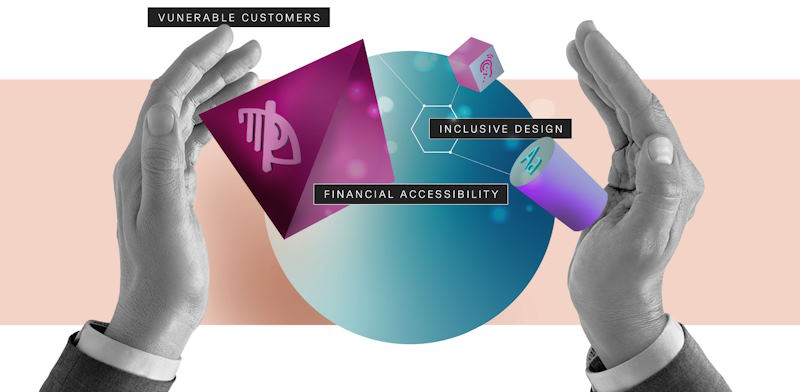- February 9, 2023
- Posted by: Mary Martin
- Category: Essential Design Tips

In the sprawling landscape of the internet, where countless websites and applications vie for our attention, it is paramount that every user, regardless of ability, can navigate and engage seamlessly. Accessibility in design is not a mere checkbox; it is a commitment to breaking down barriers and ensuring that technology is a tool for empowerment rather than exclusion.
Key Principles of Accessible Design
Creating a truly inclusive user experience requires a deep understanding of the key principles that guide accessible design. These principles not only pave the way for a more user-friendly interface but also ensure that individuals of all abilities can engage seamlessly with digital content.
Perceivable:
In the realm of perceivability, two essential elements come to the forefront. Firstly, providing alternative text for images allows screen readers to convey the content to those with visual impairments, ensuring that the meaning behind visuals is not lost. Secondly, captioning for multimedia content extends inclusivity by making audio information accessible to individuals with hearing impairments, underscoring the importance of a multi-sensory approach to communication.
 Operable:
Operable:
Accessibility hinges on operability, emphasizing that all users should be able to navigate digital interfaces with ease. The ability to navigate with a keyboard is a fundamental aspect, ensuring that those with motor impairments or those who rely on alternative input devices can maneuver through the interface effectively. Moreover, time-sensitive content considerations cater to users who may require additional time to process information, reinforcing the principle that digital experiences should adapt to diverse user needs.
Understandable:
Consistency is key when it comes to navigation and layout. A clear and predictable structure ensures that users can anticipate and understand the organization of content, fostering a sense of familiarity and confidence in navigating the interface. Simultaneously, clear and concise content speaks to the heart of accessibility, emphasizing the need for information to be presented in a straightforward manner, benefiting users with cognitive impairments and enhancing the overall user experience.
Inclusive Design Process: Building for Everyone
Crafting inclusive digital experiences is not a retrospective endeavor; it begins at the very inception of the design process, shaping a user interface that considers the diverse needs of all individuals.
Integrating Accessibility from the Beginning:
The foundation of an inclusive design process lies in the conscious integration of accessibility considerations from the project’s genesis. Designers and developers must view accessibility not as an add-on but as an inherent aspect of every creative decision. By incorporating accessibility from the outset, a digital product is poised to organically align with the principles of universal design, ensuring a more inclusive experience for users of all abilities.
 Involving Users with Disabilities in Testing and Feedback:
Involving Users with Disabilities in Testing and Feedback:
No one understands the nuances and challenges of accessibility better than those who directly experience it. Inclusive design thrives when users with disabilities are active participants in the testing and feedback loop. Their insights provide invaluable perspectives, unveiling potential barriers and refining the user experience. This participatory approach not only validates the efficacy of design decisions but also fosters a sense of empowerment and representation within the user community.
Collaborating with Accessibility Experts and Organizations:
An inclusive design process is fortified by collaboration with accessibility experts and organizations. These partnerships offer a wealth of knowledge and best practices, ensuring that the design aligns with industry standards and guidelines. Working hand-in-hand with advocates for accessibility enriches the design process, transforming it into a collective effort to bridge digital gaps and make technology universally accessible.

